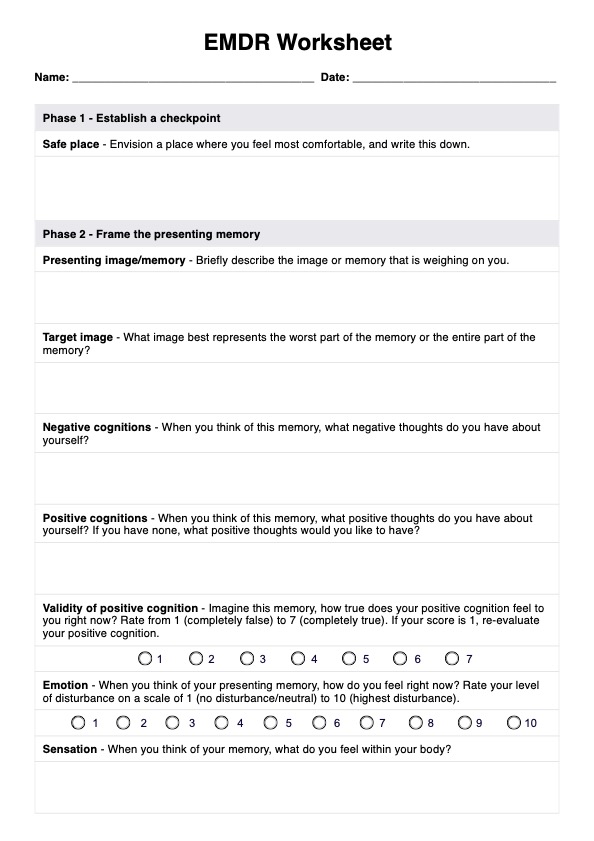EMDR worksheets are completed by the patient at hand. They are not completed by healthcare practitioners and professionals unless they are transcribing information for the patient. However, most of the time the patient will have full control over the content of their EMDR, as after all, they are the ones being assessed!

EMDR Worksheets
Check out our EMDR worksheets for supporting your eye movement desensitization and reprocessing psychotherapy treatments. Facilitate higher clinical outcomes, and promote improvements beyond the office.
EMDR Worksheets Template
Commonly asked questions
As you can imagine, if the client chooses to complete the worksheet as homework, it is impossible to witness their progress in person. As a result, EMDR worksheets include exercises that can be completed independently, and in the absence of mental health practitioners. This allows for the patient to continue their progress outside of the office, and in between appointments, and also allows for greater control over their healthcare experience.
EMDR worksheets can be used as a supplementary tool for eye movement desensitization and reprocessing psychotherapy treatment. They are worksheets that help support EMDR practices and processes, meaning that you should only utilize these worksheets if you are using an EMDR approach. They are a great additional tool if you would like to measure progress, work on a particular area, or gain greater insight into patient capabilities.
EHR and practice management software
Get started for free
*No credit card required
Free
$0/usd
Unlimited clients
Telehealth
1GB of storage
Client portal text
Automated billing and online payments











